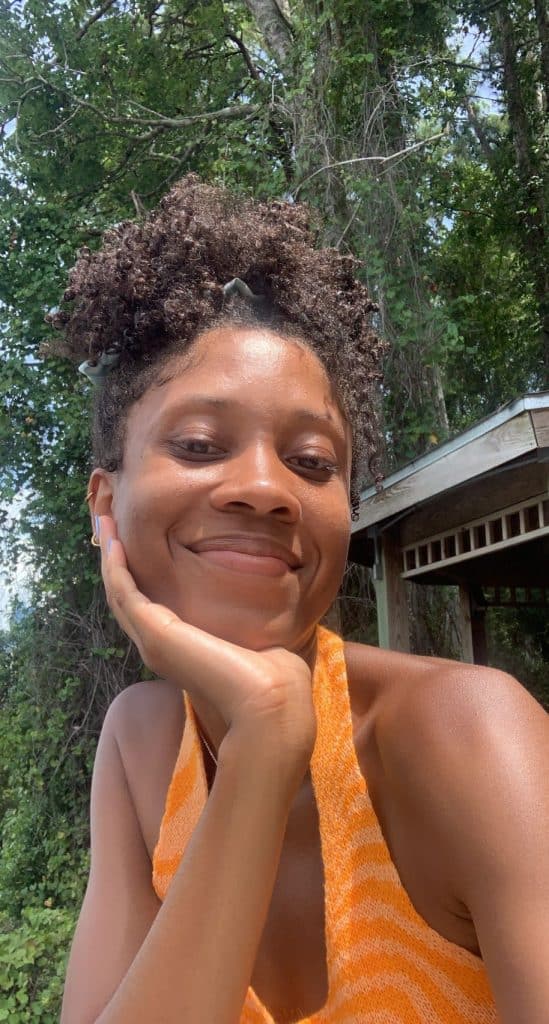Have you signed up for The Educator’s Room Daily Newsletter? Click here and support independent journalism!
When I started teaching in the U.S. in 2018, I had a student, let’s call him ‘Eddie,’ who was unbelievably quirky, to say the least. In class, he always tucked in his shirt, speed-walked everywhere, was always on the hunt for a snack (or multiple…), and always had a random science fact ready at a moment’s notice. He loved anime and video games and was curious about human Evolution and why we are who we are. On the other hand, his peers loved talking about the latest relationship drama, fads, and social media trends.
On occasion, Eddie would come to me explaining how he felt like he didn’t fit in, and we would lament together for a moment before perking back up and moving on with our day. As a quirky, Black woman teaching Biology, I could empathize with Eddie. I’ve got a mass of dark brown, naturally curly hair that doesn’t always sit in a perfect Afro, glasses, wear pants that don’t always reach my ankles, have a lizard, and tattoos, kind of like a spunky, Black version of Ms. Frizzle. To my students, I stressed the importance of doing what you love, and not trying to fit into an idea of who people think you should be.
At the time, I didn’t look like the scientists I was shown growing up, or even have the same interests as my peers in my college research lab. I was a Biology teacher who loved photography and was academically stronger at learning languages and history than I was at learning science. I dressed in bright colors and heeled boots that made me feel beautiful and confident. I incorporated theater activities into my lessons and danced in front of my 16 year old students to show them what I thought various biological entities, like viruses, would move like. I showed my students that you could unapologetically be yourself, and have different interests, but still be a scientist at the same time.
Before Eddie graduated the following year, he wrote me a letter explaining how much it meant to him to see me embrace my most authentic self in the classroom. It made him feel like he could be the most authentic version of himself, free of inner judgment. Almost four years later, Eddie’s words still impact me in the classroom. It informs how I embrace the different aspects of my personality in front of my students. As a novice teacher, I didn’t think about the impact fully embracing my personality would have on my students. By showing up authentically, I allowed my majority Black and Brown students to see a woman of color in a STEM field, one that has traditionally been dominated by groups of people who don’t look like them.
I know the importance of Black people in STEM firsthand. Growing up in a Philly suburb with little access to the internet as a pre-teen, when I thought of a scientist, I thought of an older White man in a lab coat. Very Bill Nye the Science Guy. I didn’t see Black women with afros who dressed or spoke the way that I did or studied the things that I liked to study. The idea that I had about what a scientist did was very narrow. They wore white coats, worked in labs, handled chemicals, and helped people. As I got older and engaged in the science field, the narrative about what a scientist “looked like” changed. As of 2019, there were roughly 46,999 scientists employed in the U.S. About 56.9% of them were male, the average age was 41 years old, and while 56.3% of them were White, only 5.5% of them were Black.
According to surveys conducted by the Pew Research Center in 2018, only 9% of the STEM degrees awarded across the bachelor’s, master’s, and doctoral levels were given to Black adults. It’s no surprise a lack of representation in elementary and high school can lead to a decrease in entry into scientific fields. Of those same respondents, 50% of them cited that lack of access to quality education and lack of mentors in the field as the two major reasons why young Black and Brown students don’t pursue STEM degrees.
As STEM teachers, and specifically those of non-White ethnic and cultural backgrounds, it’s so incredibly important for us to embrace our titles as scientists, pursue higher levels of education, stay current, and embrace the parts of ourselves that we have in common with our students, especially our Black, Brown, and female-identifying students. Before we do the work of encouraging them to pursue those scientific fields on their own, we must show them that there is a place for them. They can be scientists and photographers. They can be scientists that improve and rebuild their local communities. They can be scientists and work for large and small businesses. Most importantly, they can be scientists and be comfortable in their own skin at the same time.

My name is Shannon Richardson and I’m a current high school Biology teacher working in East New York and living in Brooklyn. I’m in my 6th year as a teacher and 5th year teaching in the U.S. I grew up in a Philadelphia, PA suburb, and went to college at the University of Scranton to study Biology, the Marine Sciences, and Language. I graduated in 2017 with a bachelor’s in biology and spent a year in Yap, Micronesia as a volunteer teacher, teaching Earth Science, Biology, and Physics. Prior to becoming a Biology teacher and science department chair at my current school, I got my Masters of secondary education from the Relay Graduate School of Education.
Editor’s Note: If you enjoyed this article, please become a Patreon supporter by clicking here.







What an awesome article. With a daughter who is also interested in majoring in Biology, I will be sure to share this article for some inspiration and light. Keep up the great work and keep inspiring black and brown scientists.
I agree so much, i love this.